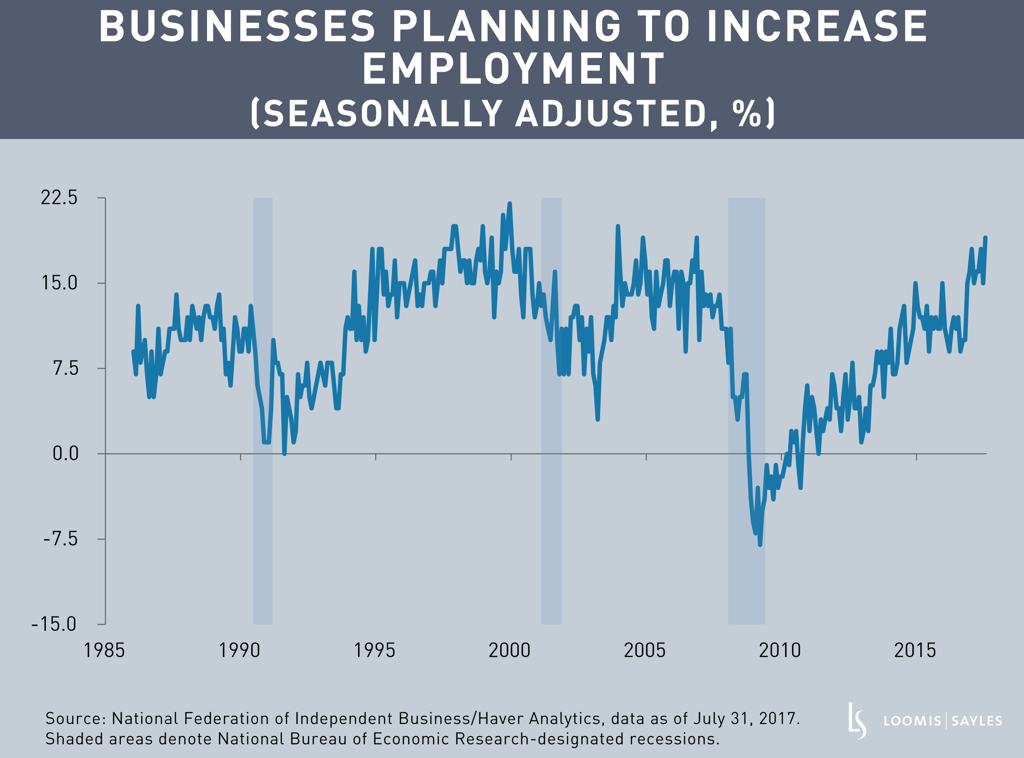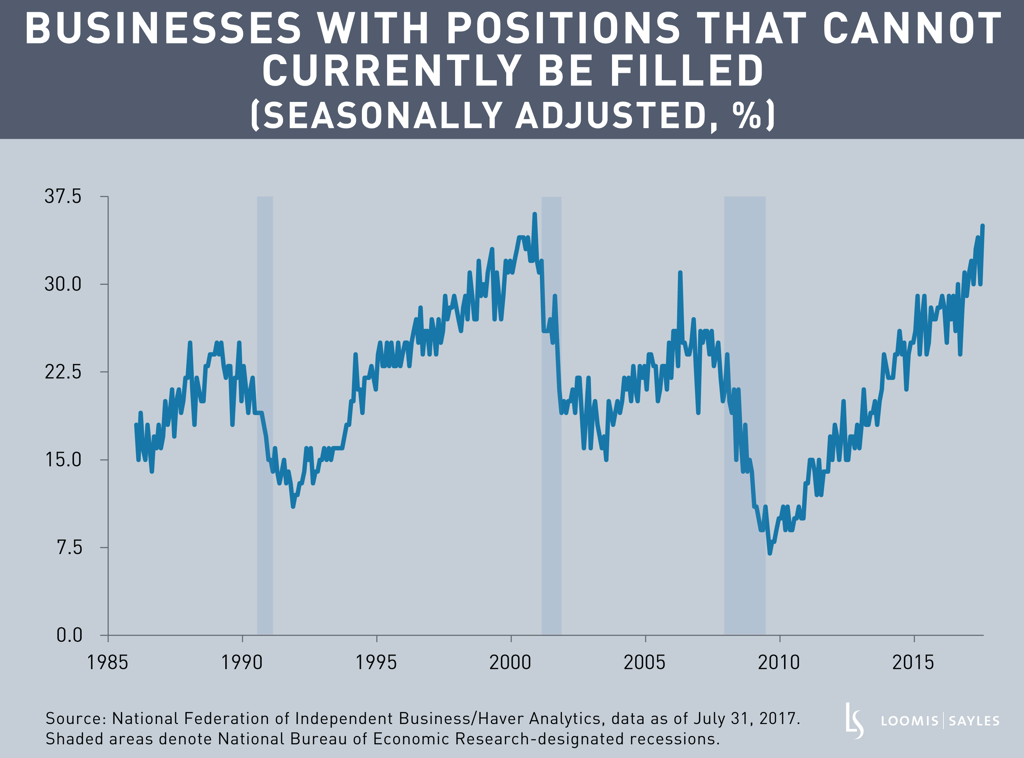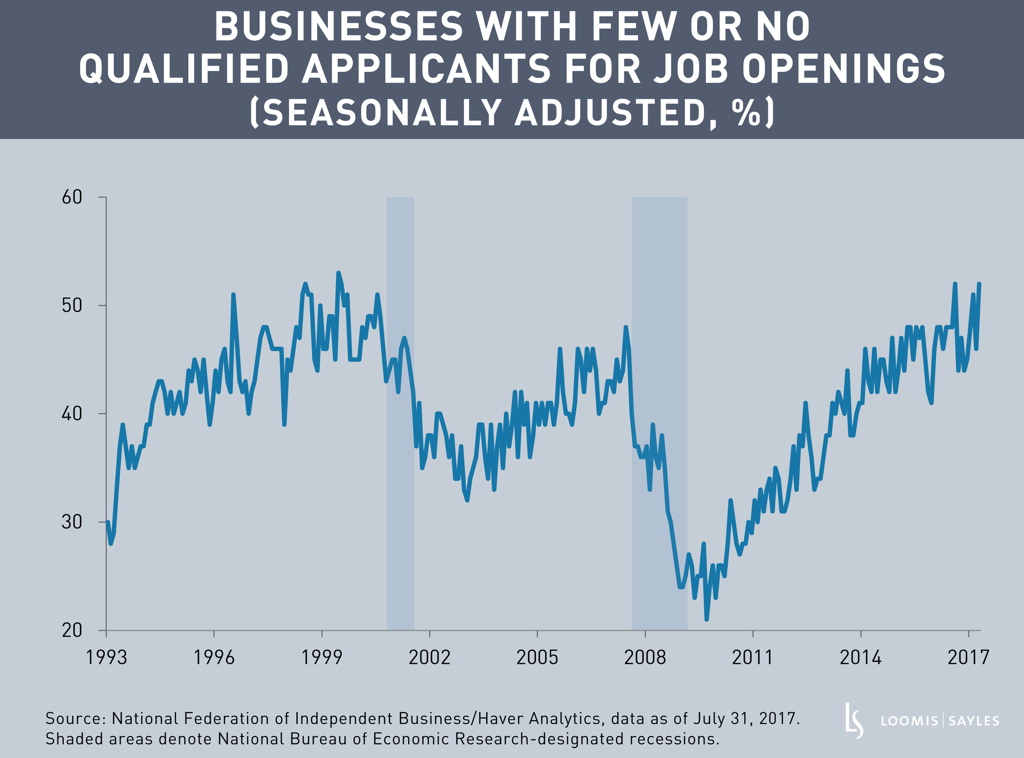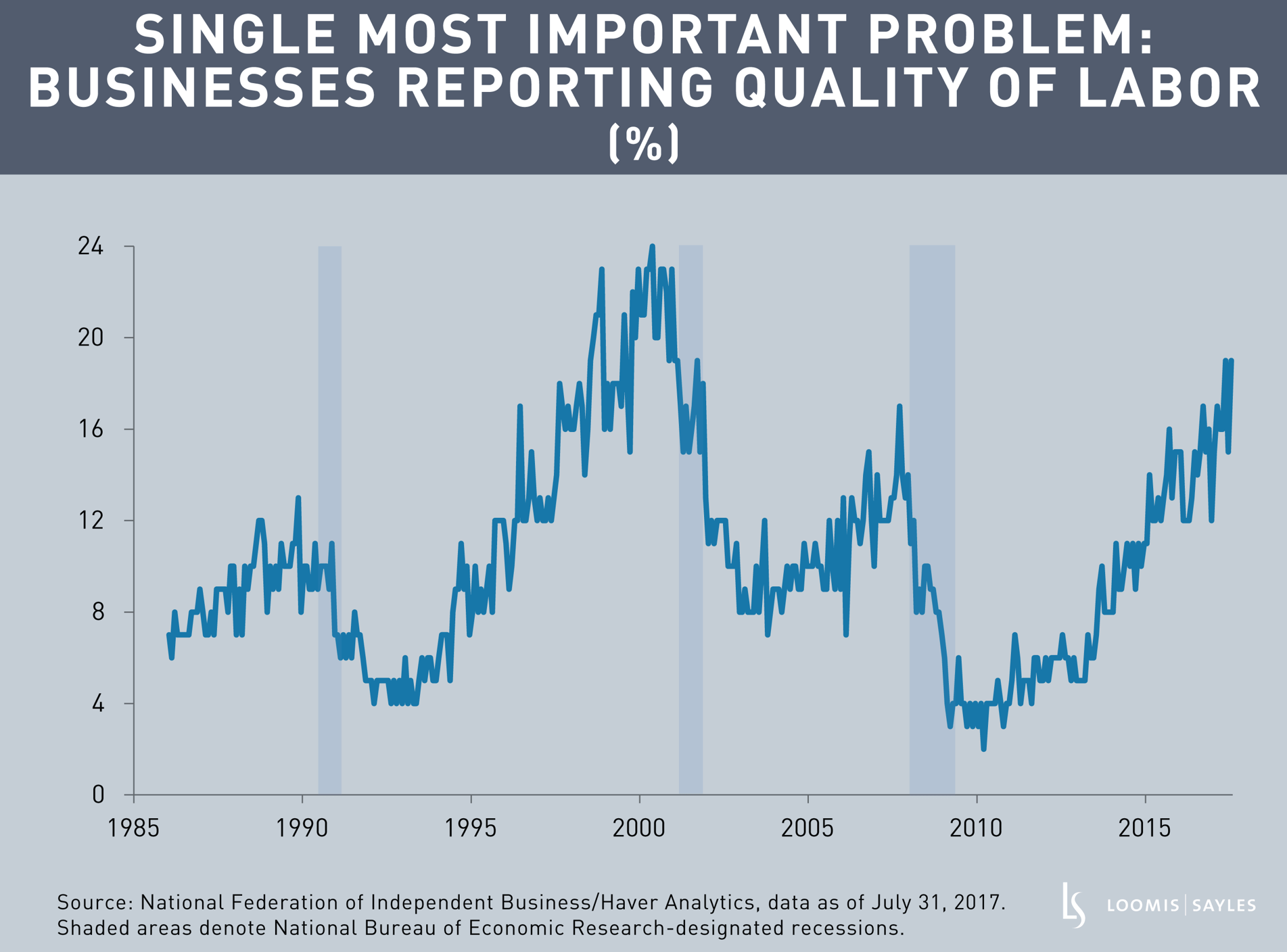In early August, the National Federation of Independent Business (NFIB) released a small business survey that revealed an upbeat assessment of the labor market. Firms have lots of job openings and they are planning to hire, but they are having a hard time finding qualified applicants; the quality of labor is a problem.
This is a picture of a tight job market. That doesn't mean there are not a lot of jobless adults; there are. In some cases, there may be people who could be hired, but they are unable or unwilling to relocate for work. The joblessness is increasingly structural rather than cyclical.
Structural vs. Cyclical
“Jobless” is not the same as “unemployed.” To be classified as unemployed by the Bureau of Labor Statistics (BLS), a jobless individual must be looking for work. Jobless individuals who have dropped out of the labor force are not classified as unemployed. Currently, there is a lot of joblessness, but not that much unemployment.
In any case, I don't think keeping interest rates low is a good way to reduce structural unemployment. The Federal Reserve takes this kind of survey seriously, and we may see that reflected at their September meeting.
Four charts tell the story well, and there appears to be a growing mismatch between available jobs and the qualifications of the unemployed population.
1. More businesses are planning to increase employment
The net percentage of businesses planning to increase employment rose from 15% to 19% in July, the highest since December 2003 and the second highest since 1999.

2. Yet more businesses also have positions they are unable to fill
The net percentage of firms with positions that they are not able to fill right now rose from 30% to 35%. That is the second-highest reading on record (the highest was in November 2000).

3. Why? Businesses are struggling with a lack of qualified applicants
The net percentage of businesses saying that they had few or no qualified applicants for job openings rose from 46% to 52%, the second highest on record (the highest was 53% in September 1999).

4. More businesses say “quality of labor” is their biggest problem
Finally, the net percentage of businesses that identified "quality of labor" as their single most important problem rose from 15% to 19% in July. The reading was 19% in May also; the reading hasn’t been above 19% since 2000.

MALR020538







